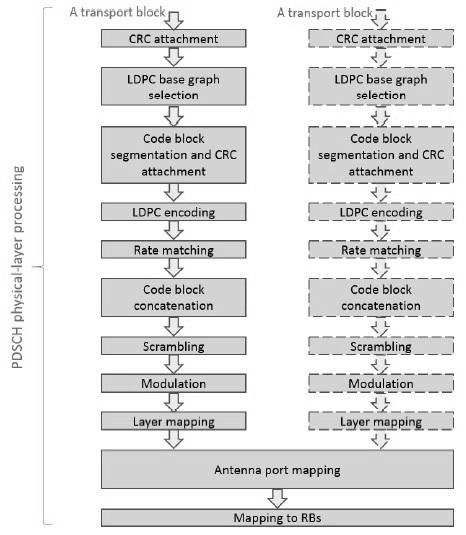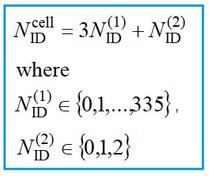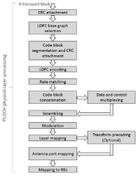5G NR PDCCH: Function, Contents, and Physical Layer Processing
Advertisement
This article delves into the 5G NR PDCCH (Physical Downlink Control Channel), covering its function, contents, mapping, and physical layer processing. The 5G NR wireless system supports the following channels:
- Downlink channels: PDSCH (DL shared channel), PBCH (Broadcast channel), PDCCH (DL control channel)
- Uplink channels: PRACH (Random Access Channel), PUSCH (UL shared channel), PUCCH (UL control channel)
PDCCH Function, Contents, and Mapping

- The PDCCH channel carries DCI (Downlink Control Information), such as downlink scheduling assignments and uplink scheduling grants.
- The figure above illustrates the 5G NR PDCCH.
- Unlike LTE control channels, which occupy the entire system bandwidth, 5G NR PDCCH channels occupy specific subcarriers and OFDM symbols. These channels are transmitted within a CORESET (configurable control resource set).
- 5G NR provides flexibility in both the time and frequency domains. Additionally, certain 5G numerologies are configurable to accommodate diverse use cases.
- Frequency allocation within a CORESET can be either contiguous or non-contiguous. In the time domain, it occupies approximately 1 to 3 consecutive OFDM symbols.
- The REs (Resource Elements) within a CORESET are organized into REGs (RE groups). Each REG comprises 12 REs of one OFDM symbol within a single RB (Resource Block).
PDCCH Physical Layer Processing

- In 5G NR, PDCCH is confined to a single CORESET and transmitted with its dedicated DMRS (Demodulation Reference Signal). This enables UE-specific beamforming for the control channel.
- A PDCCH channel is transported by 1, 2, 4, 8, or 16 control channel elements (CCEs) to accommodate varying DCI payload sizes or coding rates.
- Each CCE consists of approximately 6 REGs. The mapping from CCE to REG can be interleaved or non-interleaved (for local beamforming). Interleaving is used to achieve frequency diversity.
- Before modulation, the number of bits to be transmitted on the physical channel is scrambled.
- Following scrambling, QPSK (Quadrature Phase-Shift Keying) modulation is applied, resulting in complex modulated symbols.
- These complex symbols are then mapped to physical resources using the appropriate antenna port (p=2000), considering DMRS mapping.
- The physical layer processing for PDSCH (Physical Downlink Shared Channel) is illustrated in the figure above.
The PDCCH channel follows the same modules, with modifications, as described in the 3GPP TS 38.211, 38.212, 38.213, and 38.214 specifications.
Advertisement
 RF
RF





